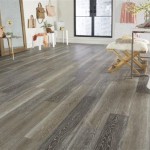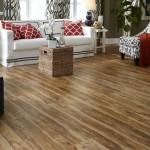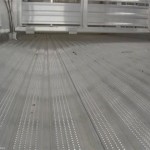Engineered Wood Flooring vs. Laminate: Essential Considerations
When considering a new flooring installation, two attractive options are engineered wood flooring and laminate flooring. While both offer benefits, it's crucial to understand their differences to make an informed decision that meets your specific needs and preferences.
Composition:
Engineered wood flooring is comprised of a core layer made from plywood, high-density fiberboard (HDF), or other wood products, with a thin veneer of real hardwood on top. Laminate flooring, on the other hand, has a fiberboard core with a decorative layer printed with a woodgrain pattern and protected by a transparent wear layer.
Durability and Longevity:
Engineered wood flooring boasts higher durability compared to laminate flooring. Its real hardwood surface can withstand scratches and wear better, making it more suitable for high-traffic areas. Laminate flooring is more prone to scratching and may not hold up as well in heavy-use areas.
Water Resistance:
Engineered wood flooring with a water-resistant core can handle occasional spills and moisture better than laminate flooring. However, it's still not completely waterproof and should be protected from prolonged exposure to water. Laminate flooring, on the other hand, is water-repellent but can swell and deteriorate if it comes into contact with excessive water.
Appearance and Versatility:
Engineered wood flooring offers a more authentic wood look and feel, as its top veneer is genuine hardwood. It comes in a wide range of species, colors, and finishes, providing ample customization options. Laminate flooring, while offering a realistic wood appearance, may not have the same visual depth and warmth as real wood.
Installation and Maintenance:
Engineered wood flooring typically requires professional installation, as it involves intricate joinery techniques. Laminate flooring, on the other hand, is relatively easy to install with its click-lock or glue-down methods. Maintenance for engineered wood flooring includes periodic cleaning, waxing, and refinishing, while laminate flooring often needs only regular cleaning and sweeping.
Environmental Considerations:
Engineered wood flooring is generally more environmentally friendly than laminate flooring. Its use of real hardwood contributes to sustainable forestry practices, and its durable construction ensures a longer lifespan. Laminate flooring, while made from synthetic materials, can emit volatile organic compounds (VOCs) during the manufacturing process.
Cost:
Engineered wood flooring typically costs more than laminate flooring due to its higher material and installation costs. However, its durability and long-term value may offset the initial investment over time.
Conclusion:
Engineered wood flooring and laminate flooring offer unique advantages and considerations. Engineered wood flooring excels in durability, authenticity, and environmental sustainability, while laminate flooring provides cost-effectiveness, water resistance, and ease of installation. By carefully weighing these factors against your specific requirements, you can make an informed decision that will enhance the beauty, comfort, and functionality of your home.

Engineered Flooring Vs Laminate Everything You Need To Know Forbes Home

Engineered Wood Flooring Vs Laminate Albany Woodworks

Engineered Hardwood Vs Laminate

Solid Vs Engineered Laminate Wood Flooring Make The Right Choice

Engineered Hardwood Vs Laminate

Choosing Between Laminate And Engineered Wood Flooring Jg

Laminated Engineered Wood Flooring For Office And Home Thickness 15 Mm At Rs 180 Square Feet In Greater Noida

Engineered Wood Vs Laminate Flooring What S The Difference Greyspace

Laminate Engineered Wood Real Flooring What S The Difference

Engineered Hardwood Vs Laminate Flooring What S The Difference
Related Posts








